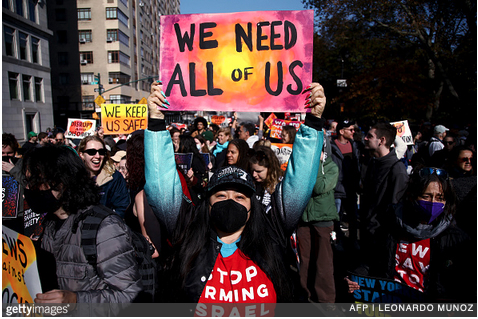See this article in Spanish https://peacehouse.net/los-rostro-de-las-damnificadas-de-eta/
Original article at https://radioprogresohn.net/portada/los-rostro-de-las-damnificadas-de-eta/
Note:
Radio Progreso is a major radio station based in El Progreso in northern Honduras. Its director is Fr. Ismael Moreno, SJ, who has visited Ashland, Oregon, several times, is a friend of Peace House. The cities of San Pedro Sula, La Lima, and El Progreso are less than thirty minutes from each other by car, although now the highway that connects them is filled with victims of flooding from Hurricane Eta who have nowhere else to go. The entire area contains three large rivers and has suffered catastrophic flooding. Eta went on from Central America to cause flooding along the east coast of the U.S.
The following (translated from Spanish) is a photo report by journalists from Radio Progreso. It gives us a glimpse of just one small area in a disaster that has affected all of Honduras and much of Central America. See the original article in Spanish at https://radioprogresohn.net/portada/los-rostro-de-las-damnificadas-de-eta/
By the time this is posted on the Peace House website, Honduras itself will have been hit by yet another hurricane, Iota. So far, there has been criticism of the Honduran authorities that they have either been absent or, in some cases, actually hindered the passage of relief supplies from southern Honduras to the north.
HONDURAS IS DEVASTATED BY HURRICANE ETA, HOW YOU CAN HELP!
The Faces of Eta’s Victims — Radio Progreso

“No authorities have come here, they haven’t brought any help. All the help is from individuals who come to leave food an other things,” said Carmen, one of the women who, with her two sons, was camped out on the highway that connects the urban areas of La Lima and San Pedro Sula, in northern Honduras.
This road was converted into the biggest refuge in the north of the country after the passage of [Hurricane] Eta. Entire neighborhoods have camped out on that public road after the Chamelecón River overflowed, flooding one hundred percent of the city of La Lima.
A simple look makes clear the many needs of the people.They are living on that highway under the sun and the rain, without access to drinking water, toilets, or blankets and mattresses to sleep. In interviews conducted by Radio Progreso, the people asked for help from their local and national authorities in this moment of humanitarian crisis. They asked that they not be abandoned once again when [Hurricane] Iota passes through.
In this selection of photos, we show the reality of mothers, children, grandmothers, neighbors, all the women victims of the city of la Lima, [Department of Cortés, northern Honduras]. Despite the precarious reality, they continue demanding that the authorities be responsible to these communities.
After a week encamped on the main road of La Lima, the lack of water for cleaning and drinking has become one of the biggest problems for the victims.
Women form 51.7% of the total population of Honduras, or 4,735,920 people, of whom 56.8% are in urban areas and 43.2% in rural zones. The passage of Hurrican Eta caused catastrophic flooding that has devastrated the lives of more than 1.2 million children and adolescents in Central America, according to estimates by UNICEF.
According to the Social Forum on the External Debt (FOSDEH), the losses from the passage of Eta could reach 12 billion lempiras—a little less than $500 million.To get Honduras out of this severe economic crisis will mean formulating and putting into practice a Plan for National Reconstruction in which all sectors participate.
Copeco [the Honduran government emergency agency] reports that there are 425 shelters in the entire country, with 42,746 persons. Aid teams count a total of 92,223 people rescued. The housing affected numbers 22,154, the largest portion in the Sula Valley [northern Honduras].










